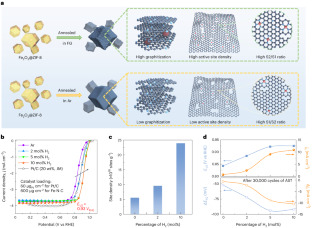2023-12-05 カリフォルニア大学サンディエゴ校(UCSD)
◆これは、エンケラドゥスの海洋が水、エネルギー、有機物を備えた「海洋の世界」である可能性があり、生命の探索において重要な進展です。研究は、将来の探査機がこれらの氷の月の表面に着陸せずとも、太陽系内で生命を検出する可能性を提案しています。
<関連情報>
超高速氷粒衝突質量分析計による無傷アミノ酸の検出 Detection of intact amino acids with a hypervelocity ice grain impact mass spectrometer
Sally E. Burke, Zachary A. Auvil, Karl A. Hanold, and Robert E. Continetti
Proceedings of the National Academy of Sciences Published:December 4, 2023
DOI:https://doi.org/10.1073/pnas.2313447120

Significance
The search for extraterrestrial life, especially within our solar system, is one of the biggest endeavors of mankind. The icy moons of Saturn and Jupiter, Enceladus and Europa, are particularly promising for hosting life, as they have shown evidence for the three important criteria: water, energy, and organic chemicals. Both moons eject their subsurface ocean material as a plume of icy particles, providing the opportunity to study the ocean composition and potential habitability via plume flythrough sampling. The results reported here provide unambiguous laboratory evidence that we could fly through these plumes at speeds up to 4.2 km/s and successfully detect intact amino acids, an important class of biosignature molecules, in situ with a mass spectrometer.
Abstract
Astrobiology studies are a top priority in answering one of the most fundamental questions in planetary science: Is there life beyond Earth? Saturn’s icy moon Enceladus is a prime target in the search for life in our solar system, identified by NASA as the second-highest priority site for a flagship mission in the next decade. The orbital sampling technique of impact ionization mass spectrometry indicated the presence of complex organics in the small icy plume particles ejected by Enceladus encountered previously by Cassini. However, high interaction velocities caused ambiguity as to the origin and identity of the organics. Laboratory validation of this technique is needed to show that biosignature molecules can survive an impact at hypervelocity speeds for detection. Here, we present results on the hypervelocity impact of organic-laden submicron ice grains for in situ mass spectrometric characterization with the first technique to accurately replicate this plume sampling scenario: the Hypervelocity Ice Grain Impact Mass Spectrometer. Our results show good agreement with Cassini data at comparable compositions. We show that amino acids entrained in ice grains can be detected intact after impact at speeds up to 4.2 km/s and that salt reduces their detectability, validating the predictions from other model systems. Our results provide a benchmark for this orbital sampling method to successfully detect signs of life and for the interpretation of past and future data. This work has implications not only for a potential Enceladus mission but also for the forthcoming Europa Clipper mission.



